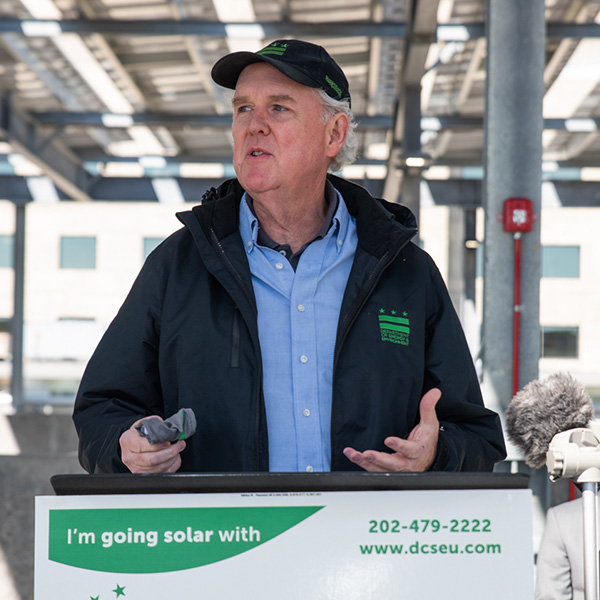
Tommy Wells is the Director of the Department of Energy & Environment (DOEE). Appointed January 2015, he is chiefly responsible for protecting the environment and conserving the natural resources of the District of Columbia.
What does a thriving DC look like for buildings?
A thriving DC for buildings means that we have supported diversity of infrastructure, building use types, businesses, and people in order to create a resilient DC. Monocultures fail, so we need to prioritize buildings that don’t just serve one purpose or one type of person. Our homes, businesses, cultural centers, and parks should be inclusive and adapt to the challenges of the climate crisis. All facets of our society—environmental, cultural, and economic—should be working together to support a high quality of life for all residents. It means that we, as a part of the District government, have provided the support systems that enable our residents to flourish. Our job at DOEE is to support both our natural and built environment. DC’s buildings, roads, and energy infrastructure can—and should—work together with our people, plants, and animals in order to create a unified and healthy living environment.
How do you see the private sector and government working together in DC to advance sustainability in our buildings?
Both the government and private building industry need to work together to advance sustainable building practices. That close collaboration is key to meeting our urgent climate goals. We look to our market leaders to know what’s possible, what they see as the next frontier in commercial real estate, and to understand how the market is moving and where we should be encouraging it. The building industry looks to us for signals—they want to understand our priorities, where we’ll be focusing our investments and policies, and how they leverage it. Both sides need each other to make this all happen. It’s important that we have a good, and trusting, relationship with our private building industry so that we can work together to make greater strides. Even though we often look at the problem from different perspectives, the ultimate goal is to ensure that infrastructure supports healthy and resilient communities.
“To actually hit our sustainability goals, it takes a unified vision and a commitment from all parties that we’re going to work together to equitably address the causes and effects of climate change.Tommy Wells
What will make it easier for people to act?
We need to be able to demonstrate to the building industry that the things we’re asking them to do—be more energy efficient, invest in renewables, consider innovative system types, invest in our local workforce—are all things that have been done before. The things we’re looking to pursue all have case studies, if not even local ones, that showcase how others have done it and the lessons learned. We are lucky in that our local building community has experience, both here in DC and well beyond, and can share their expertise. That’s where the Building Innovation Hub can help. The Hub is a convener of industry that facilitates information and resource sharing. We fully recognize that the best way to learn and grow in this industry is to hear from the peers who are doing the work. The key is to actually use that knowledge. DOEE and the Hub create resources and foster connections so that businesses can utilize them to create bold climate mitigation strategies. It’s in the name: sustainability is not possible in a state of inaction, it takes a constant, concerted effort from everyone in order to achieve our goals.
What is it going to take to get there within this decade?
To actually hit our sustainability goals, it takes a unified vision and a commitment from all parties that we’re going to work together to equitably address the causes and effects of climate change. We need everyone to extend themselves beyond their comfort zones and out of the “but this is how we’ve always done it” mentality. There are so many exciting technologies—new and old—and fresh perspectives on how buildings can function. We need to tap into these resources. If we’re going to meet our objectives we all have to take a big step together towards the future, realizing that the way we do business and the way we govern will need to improve. Institutions may view the work ahead of us as an impossible challenge, but I urge people to view climate change as an opportunity to fight for equity, inclusion, and build a thriving city.

